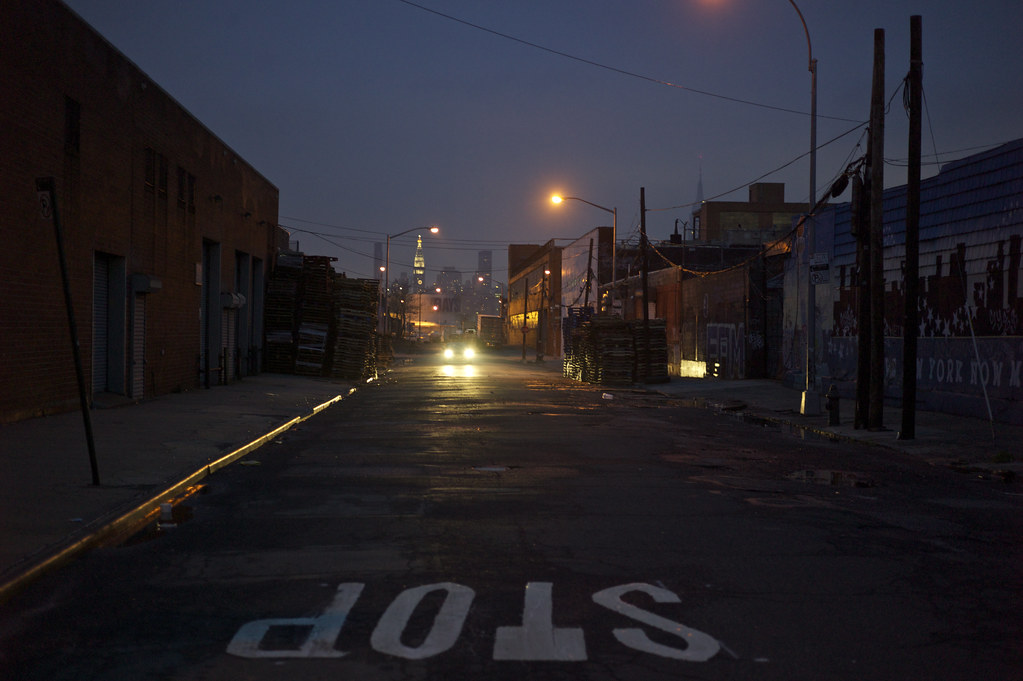Understanding how social determinants shape patient health is a critical factor in the reduction of health disparities. The World Health Organization acknowledges that disparate community resources are a significant contributor to health inequality, impacting emotional well-being, and mental health; physicians, meanwhile, often feel unprepared to intervene. To address this issue, medical educators have started to introduce training in structural competency.
Structural competency aims to understand how social structures impact health, and bridges research on social determinants of health with clinical intervention. A recent study from Yale University aimed to create an educational activity introducing social competency to psychiatry residents, centering their work in disciplines not traditionally included in medical education such as critical race studies, urban planning, and anthropology.

The authors balanced anticipated sources of resistance with the understanding that emotional experiences such as discomfort can have educational utility, such as an examination of self-images concerning how one perceives others. The authors decided on a drawing exercise that was tailored for adult learners. Drawing has strong roots in educational and community activism and is often used as a means to explore spatial thinking, the meaning of civic sites and participants’ lived experiences.
Twenty second-year psychiatry residents were asked, after reading the foundational paper on structural competency and getting an introduction to vocabulary, concepts and clinical skills, to draw the neighborhood where they grew up, highlighting structural domains that affected their health. These domains included healthcare, recreation, education, legal, transportation, nutrition, financial, environmental, and summer employment.
Residents were then given 2-3 minutes to present their drawing to the group. A month later, residents were asked to interview a patient in their clinical service about structural domains in their neighborhood that influenced their life, then drawing their patient’s neighborhood and presenting it to the group. A month after that, residents engaged with patients and community leaders and patients in areas around the medical center, and at the end of the academic year, they were surveyed on how frequently they discussed structures with patients before and after the drawing activities as well as whether they used the map drawing exercise again.
“Most residents adopted an approach of presenting a condensed story of themselves, their family, and their neighborhood before discussing their assigned structural domain,” wrote the authors. “To lessen the discomfort of self-disclosure, most used one of two strategies… purely objective documentation, drawing literal, dispassionate depictions of resources present or absent from their neighborhood. Others, particularly those from backgrounds at the extremes of socioeconomic status (SES), used more detailed descriptions of the role structures played in their lives. Those from the upper SES levels were aware but ambivalent about the privilege they experienced growing up, presenting a broad selection of grocery options or the far distance from industrial pollutants. Those from the lower SES often discussed how structural challenges in their neighborhood, such as poor-quality schools, had been countered by strengths, such as support from friends and family.”
Of the original 20 residents, 14 attended the second session discussing their patients’ neighborhood; while this decline is a limitation of the study, the authors did not attribute it to lack of enthusiasm. Most told a narrative-driven visual story of the patient’s interaction with structures, though the more impactful drawings highlighted subjective experience such as distance from resources or challenges interacting with structures. A particularly compelling picture, said the authors, came from an African-American patient focused on neighborhood crime and police interactions.
“[Before the drawing], the patient had been challenging to work with due to their refusal to talk,” wrote the authors. “But, after being asked about the neighborhood he lived in, the patient began to talk openly about his traumatic interactions with police and the effect of these experiences on him and his family. The resident reported that asking about structures not only ‘changed every subsequent interaction with the patient’ but dramatically augmented the resident’s understanding of being an African-American man in the USA.”
Many residents reported an experience of increased empathic connection following the intervention; 60% reported an increase in how frequently they discussed structures affecting health with patients, 70% used positive descriptors like ‘thought-provoking’ to describe the intervention, while 30% chose descriptors such as ‘tame’ or ‘mundane.’
The authors conclude that this is an accessible method for teaching residents to recognize structures in their own lives as well as their patients’ lives. While there was no control, the authors identified greater vigor than the usual academic presentations residents receive, a factor they believe is essential for an introductory experience to a new topic.
The authors focused on several potential areas of improvement, including increasing discussion time for residents, alternative approaches such as having residents draw their neighborhoods in contrast to their patients, highlighting their relative privilege, and highlighting structural humility, which is self-evaluation that emphasizes the power imbalance between patient and physician.
None of the residents conducted the drawing activity with their patients, though 60% did engage in more frequent discussions of the social determinants of health – this is an encouraging outcome, though it may have been from other structural competencies that residents received later in the year. While it is too soon to understand how residents will use the knowledge they gained, neighborhood drawing seems to be a promising method to enhance structural competency.
****
Mathis, W., Cyrus, K., Jordan, A. et al. Academic Psychiatry (2019). https://doi.org/10.1007/s40596-019-01077-z (Link)















“Structural Competency Training May Increase Empathic Connections in Psychiatry Residents”
What we should be doing is making sure that there are no more psychiatry residents, or psychiatrists of any type.
Report comment
I DO AGREE, but I am interested to have any one who believes they are going into a profession to help each other learn to talk and relate as a human being. Somehow that gets taken away from some people or they forget it. Lets help everyone remember they are humans and that they can relate to another human and their suffering in a caring connected way.
Report comment
This is kind of sad to me. Talking about the person’s neighborhood they grew up in or other aspects of their culture should be standard practice for anyone who actually wants someone to feel safe talking to them. Sharing about one’s own background is also helps build trust. If psychiatrists understood that building trust is the beginning of doing anything remotely helpful, this would not be a necessary exercise.
Report comment
I must agree, this is really too stupid to read, honestly. But that comes from a person whose psychiatrist, who knew nothing about me, and judged me based solely upon lies and gossip from child rapists, literally declared my entire life to be a “credible fictional story.”
So I’m pretty certain our “mental health professionals” are largely nothing but a bunch of child rape covering up criminals, who either need to go to jail for their child rape covering up crimes, utilize their malpractice insurance for what it’s intended, or need to go to eternal damnation, for their lack of repentance for such crimes.
Especially since misdiagnosing child abuse survivors is the number one actual function of our “mental health” workers, both historically and still today.
https://www.indybay.org/newsitems/2019/01/23/18820633.php?fbclid=IwAR2-cgZPcEvbz7yFqMuUwneIuaqGleGiOzackY4N2sPeVXolwmEga5iKxdo
https://www.madinamerica.com/2016/04/heal-for-life/
Report comment
yes but somehow people forget they are humans and if we have to remind them and we have the capacity to do so, let us…
Report comment
Horrific! While its good that shrinks might actually glean some insight into how toxic they are to the social structure itself…
1. The SDOH reveal that access to sick care is very low on the list of factors that create health.
2. In fact “Allopathic “medicine” is a social scourge. By definition and design, it cures NOTHING, suppresses symptoms that are the bodies necessary feedback system, creates imbalances in the body, (inflammation caused by stress -including trauma- and triggers disease.)
3. Drs are the 3rd leading cause of death in the US, behind cancer and heart disease, which their toxic drugs also cause, making them the leading cause of death.
4. It takes on average 7 years for a quack to dx a disease, meanwhile, everyone is at risk of being mis-labeled and used as fodder for the system to feed itself.
5. Good luck suing them when they injure or kill your loved ones with their mass sanctioned in vivo experimentation.
6. This is the first generation that will not live as long as their parents.
7. Dr’s, who are constantly whining that their too busy to do their jobs (handing out drugs) are already “social prescribing” exercise, and writing referrals for appointments to housing & food banks – the things that actually create health, which include access to decent food, stable housing, education and employment.
8. There are already people trained to do these jobs including sociologists, counselors and others also indoctrinated to do psychiatry’s bidding (conning people into buying the fraudulent lie that “MH” is separate and distinct from Human Health and can be ‘treated” as if it was a separate entity.
9. This false dichotomy -the medical model of “MH”- is simply a business model designed to profit off of the mass poverty and ignored social harming people’s health including socially sanctioned sexualized violence, mass poverty and substandard food and “medicine”.
10. The ENTIRE system is already goose stepping in line with the “mental health/illness” agenda. If and when it isn’t, it is in conflict with and the enemy of the propaganda machine that has already successfully brain washed and drugged 20 to 25% of the population.
11. All this will accomplish is that the funding that should go directly into building communities that don’t make people sick, will make the wealthy 1% even richer for scratching out an actual ‘prescription’ directing people to take personal responsibility for themselves (to the best of their ability given the limited resources bring withheld from them.)
12. The initial focus of A Disorder For Everyone was to expose/inform that a vast majority of people in the “MH” system had histories of CSA and other trauma and were being misdiagnosis-ed and mistreated as if they were “MI”.
13. Stats show that 50-80% of persons in and out of psych wards, prison and living on the streets had a history of dx’ed and un-dx’ed brain injury (concussions.) Psych drugs are contraindicated and unapproved for use in this vulnerable population because they have been know to cause brain injury for 40 years.
14. Yet very few professionals ever speak to this fact (besides Breggin and ISEPP, War fighters Advanced) because it deflects from their focus on education about trauma (a critical and important advance.)
I posted the link below on Twitter hoping Terry Lynch would debate Jordon Peterson who widely disseminates the failed serotonin imbalance theory and psych drugs for depression because …you can always stop taking them if they don’t work…across the net to millions. Terry warned him to stop if that is what he was doing (and he is) but it never went further than that.
Ironically Peterson, who has an autoimmune disease, which is well documented to be a common “medical mimic or (psychiatric pretender” – Brogan) defined as a bona fide diseases, whose SYMPTOMS are misdiagnosed as “MI”, has cured himself with an all meat diet. This and yet he continues to push the chemical imbalance myth and psych drugs to the naive public.
…a lot of psychiatric illness is autoimmune in nature and that a big part of improving that in the future is going to be treating people from that perspective, in a very holistic way.”- Psychiatrist Paul Saladino
https://articles.mercola.com/sites/articles/archive/2019/07/07/carnivore-health-effects.aspx?utm_source=prnl&utm_medium=email&utm_content=art1&utm_campaign=20190707Z1&et_cid=DM300021&et_rid=655755521
Report comment